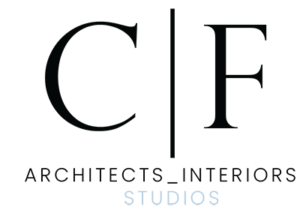The Essential Guide to Building Plans for Your Home Renovation

The question we hear most frequently at our Bryanston studio echoes across Johannesburg’s northern suburbs: “Do I really need building plans for my renovation?” Whether you’re reimagining your kitchen in Sandton, adding a second storey to your Fourways home, or creating that dream entertainment area in Waterfall, understanding when plans are required isn’t just about following regulations—it’s about protecting what is likely your most valuable asset.
The Legal Framework: When Plans Are Non-Negotiable
The National Building Regulations and Building Standards Act leaves little room for interpretation when it comes to most structural changes. Johannesburg homeowners should note that the following renovations absolutely require approved building plans:
Any extension to your home’s footprint, from a simple covered patio in Bryanston to a comprehensive second storey addition in Sandton, requires formal approval. Converting spaces—transforming a garage into a home office or creating a granny flat—similarly falls under mandatory approval territory. Even alterations that might seem internal, like removing walls or relocating plumbing fixtures, often require professional documentation and municipal approval.
The reality is that municipal building inspectors across Sandton, Fourways, and the broader Johannesburg area have become increasingly vigilant. With property values reaching premium levels, particularly in areas like Waterfall and Steyn City, the consequences of unauthorized building work can be financially devastating.
When Building Plans Might Not Be Required
Not every home improvement project requires navigating municipal approval processes. Interior cosmetic renovations that don’t alter the structural integrity of your home typically don’t require plans. This means you can refresh your Sandton apartment with new flooring, repaint your Fourways residence, or update light fixtures in your Bryanston home without formal approval.
Garden landscaping without structural elements also generally escapes the need for plan approval. However, the moment you add a boundary wall exceeding certain heights or construct a permanent shade structure, you enter territory requiring documentation.
The challenge lies in understanding where these boundaries exist—what seems like a simple renovation to homeowners might cross regulatory thresholds. A kitchen island installation that requires new plumbing or a bathroom update that relocates fixtures often triggers the need for proper documentation.
Navigating the Approval Process in Johannesburg
Understanding the municipal submission process helps manage expectations about timelines and requirements, especially in high-demand areas like Johannesburg’s northern suburbs.
Before approaching your local authority, you’ll need comprehensive documentation prepared by qualified professionals. This includes accurate site plans showing property boundaries, architectural drawings of proposed renovations, and potentially structural engineering certifications. For energy-conscious renovations in Johannesburg’s climate, documentation complying with SANS 10400-XA energy efficiency regulations has become increasingly important.
These documents must be prepared by professionals registered with SACAP (South African Council for the Architectural Profession) and, where applicable, engineers registered with ECSA (Engineering Council of South Africa). Working with locally experienced professionals who understand the nuances of Johannesburg’s various planning departments can significantly streamline your approval process.
When submitting to Johannesburg’s Development Planning Department, expect to provide completed application forms, payment of scrutiny fees, technical documentation, and proof of property ownership. In some cases, particularly in dense suburban areas or estates with special architectural guidelines, neighbor consent may also be required.
Realistic Timelines for Johannesburg Homeowners
Setting realistic expectations about approval timelines is crucial for renovation planning in Johannesburg. The approval process varies significantly depending on your project’s complexity and location within the city.
For straightforward renovations in less restricted areas, approvals might come through in 30-60 days. However, properties in heritage areas like parts of Houghton or those requiring special zoning considerations can face considerably longer waits—sometimes three months or more. Projects in high-value areas like Sandhurst or Westcliff often face additional scrutiny, extending timelines further.
The current backlog at your specific municipal office also affects processing time. Planning departments in rapidly developing areas like Midrand and Waterfall tend to experience higher volumes of applications, potentially extending wait times beyond the norm.
The completeness of your submission significantly impacts approval speed. Applications prepared by experienced architectural professionals familiar with local requirements typically progress more smoothly than those with documentation gaps.
Managing Your Renovation Once Approved
Approved plans aren’t just paperwork to file away—they serve as the official blueprint that guides your construction process and protects you legally.
Throughout construction, your project will require municipal inspections at key stages. These typically include foundation completion, drainage installation, structural framework completion, and final inspection. Missing these inspection milestones can create complications when seeking your occupation certificate—a document that becomes essential when eventually selling your property.
Keep all documentation readily available on-site during construction. This includes copies of approved plans, approval notices, and records of completed inspections. This documentation should be accessible to municipal inspectors who may visit, sometimes unannounced, to verify compliance.
If your vision evolves during construction, resist making significant changes without proper approval. While minor variations might be addressed through as-built drawings after completion, substantial changes risk rejection if discovered during inspections. This can lead to costly reworking or even demolition requirements.
The Real Costs of Building Without Approval
Some homeowners across Johannesburg’s suburbs choose to bypass the approval process, viewing it as unnecessary bureaucracy. This approach carries significant risks that extend well beyond the construction phase.
Municipalities throughout Johannesburg have strengthened enforcement of building regulations. Consequences for non-compliance can include immediate stop-work orders that halt your project mid-construction, substantial fines that can reach tens of thousands of rands, and in severe cases, court orders requiring demolition of unauthorized structures.
Beyond these immediate penalties, unapproved structures create ongoing financial vulnerabilities that many homeowners don’t anticipate. Home insurance policies typically exclude coverage for unapproved structures, creating significant risk exposure. Additionally, when selling your property, unauthorized structures often become problematic during the sale process, with banks refusing to finance properties with unregulated additions.
The property valuation complications can be particularly impactful in premium markets like Sandton and Bryanston, where proper documentation directly influences market value. Future buyers, especially in South Africa’s increasingly compliance-conscious property market, will likely request regularization at the seller’s expense before proceeding.
Regularization: The Costly Alternative
If you’ve inherited or created unauthorized structures, “regularization” offers a path to compliance, but it’s rarely straightforward. This process typically involves engaging professionals to assess existing structures, preparing detailed as-built drawings, and submitting these for approval with additional documentation.
In many cases, achieving compliance requires costly structural alterations to meet current regulations, which are often more stringent than those in place when the structure was built. This is particularly true for older properties in established suburbs like Parktown North or Parkhurst.
The regularization process almost always proves more expensive and time-consuming than following proper procedures from the start. Beyond standard submission fees, penalties may apply, and the scrutiny applied to after-the-fact applications typically exceeds that of standard submissions.
Occupation and Compliance: The Final Steps
After completing your renovation, obtaining an occupation certificate should be a priority. This critical document certifies that your renovation is built according to approved plans, compliant with national building regulations, and safe for occupation.
Without this certificate, occupation of the renovated spaces is technically not legal. More practically, this document becomes essential when selling your property, with transfer attorneys typically requiring it before completing transactions.
Maintain a comprehensive renovation file containing final approved plans, occupation certificates, engineering certifications, and compliance certificates for electrical and plumbing work. These documents prove invaluable during future renovations or when selling your property.
Common Misconceptions About Building Plans
Years of architectural practice across Johannesburg’s diverse neighborhoods have revealed several persistent misconceptions worth addressing.
Many homeowners believe small projects don’t require approval, but size alone doesn’t determine whether approval is needed. A tiny structural change can require plans, while a larger non-structural renovation might not. The nature of the work, not its scale, typically determines approval requirements.
Others assume they can easily obtain retrospective approval if needed. While regularization is possible, it’s considerably more expensive and complicated than proper advance approval, with no guarantee of success. Johannesburg’s planning departments have become increasingly strict regarding unauthorized structures.
Some contractors may suggest bypassing approvals to simplify their process or reduce apparent costs. Remember that ultimately, compliance is the property owner’s responsibility, not the contractor’s. The financial consequences of non-compliance fall squarely on the property owner.
Professional Guidance: Investment Rather Than Expense
Professional architectural services for renovation planning represent an investment rather than an expense. Beyond navigating regulatory requirements, architects provide designs that maximize renovation value, create documentation that protects your property investment, and offer solutions to challenges that arise during construction.
Working with professionals who understand the specific requirements of your neighborhood—whether you’re in a heritage area of Parktown, a secure estate in Dainfern, or a suburban setting in Fourways—typically saves money in the long run by avoiding costly mistakes, delays, and potential regularization processes.
Quality architectural plans ensure your renovation integrates aesthetically with your existing home, maintains or enhances property value, avoids construction errors, and creates spaces perfectly tailored to Johannesburg’s unique indoor-outdoor lifestyle. When viewed from this perspective, proper planning and approval becomes less about satisfying bureaucracy and more about creating the best possible outcome for your home.
CF Architects specializes in high-end residential architecture and renovations throughout Johannesburg’s northern suburbs. With extensive experience navigating South Africa’s building regulations, our team helps homeowners transform their spaces while maintaining full compliance with local building codes. Contact our Bryanston studio to discuss your renovation vision.



Can I just say what a comfort to uncover a person that really knows what they are discussing online. You actually understand how to bring an issue to light and make it important. A lot more people should look at this and understand this side of the story. I was surprised that you are not more popular because you most certainly have the gift. Jake Clopper
Hi Jake, Thank you very much for your praise. I truly do apprecaite the positive feedback.
Please feel free to email me for any further questions you may have.
Yours Sincerely,
Curtis F.